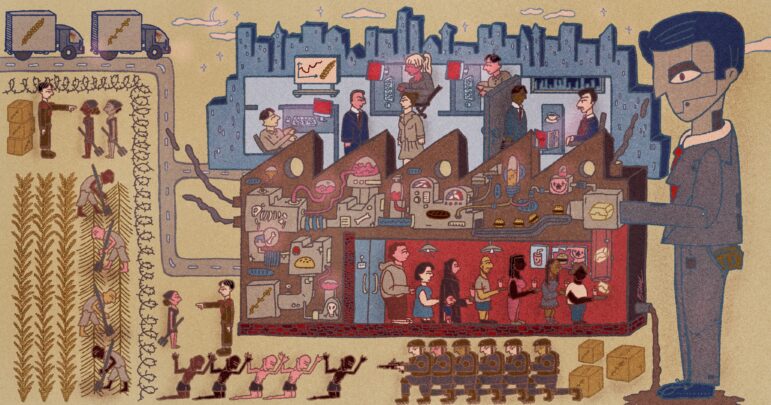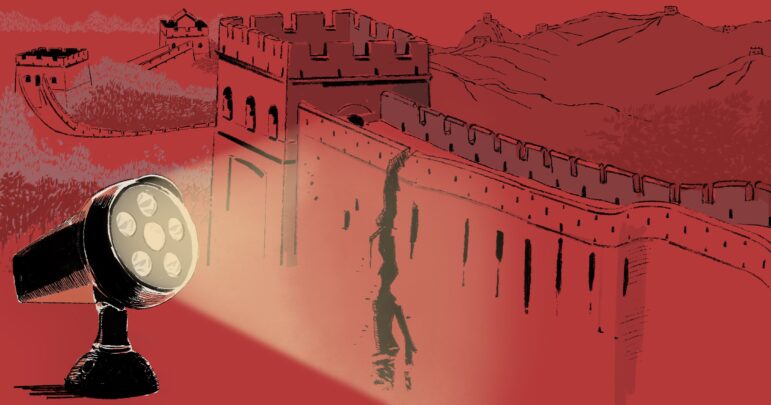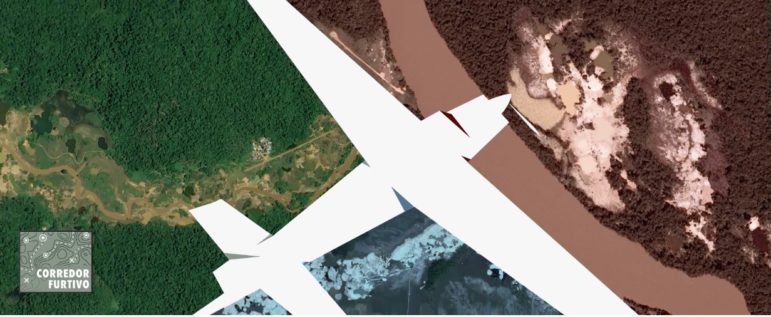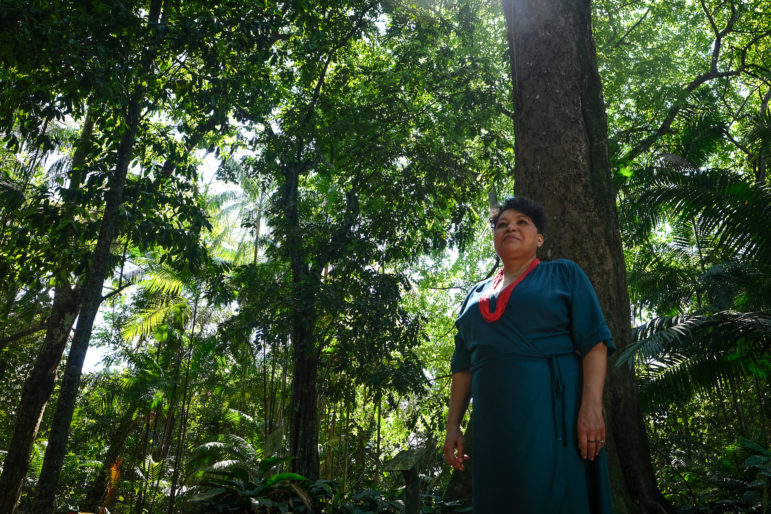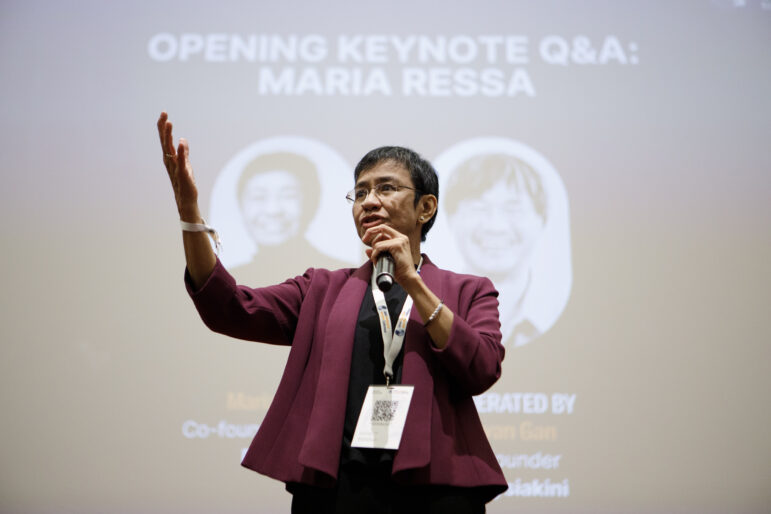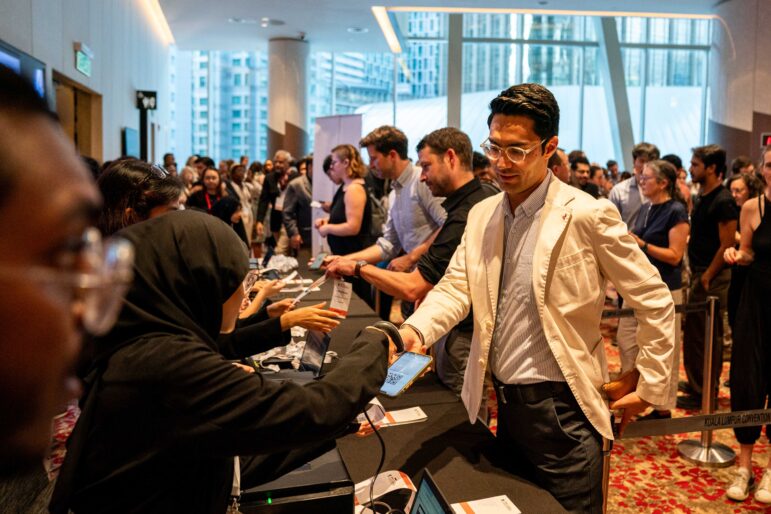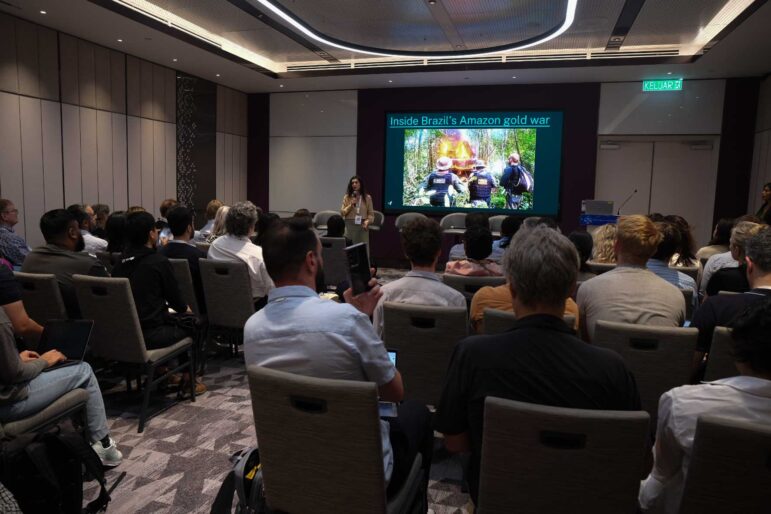

Brazilian journalist Karla Mendes shared her reporting on illicit gold mining in the Amazon during a panel on tracking illegal mining activities at the 14th Global Investigative Journalism Conference. Image: Alyaa Alhadjri for GIJN
Illegal mining is a significant challenge, particularly in Brazil, the African continent, and various parts of Southeast Asia. It exploits loopholes in regulatory frameworks and a lack of oversight, and is closely linked to economic crimes and corruption.
In many countries, the offense is also closely linked to the destruction of natural resources and Indigenous lands, as mineral reserves are often located in rural and remote areas that have been inhabited by native communities for generations.
“Illegal mining is not chaos. It’s an informal system with its own power lines,” said Linda Mujuru, an award-winning Zimbabwean freelance investigative journalist, whose reporting focuses on mining, land, and environmental justice. Mujuru spoke at the 14th Global Investigative Journalism Conference in Malaysia, in a session titled Tracing Illegal Mining Activities, where she was joined by journalists from Brazil and Turkey to discuss the challenges of reporting on illegal mining in their countries.
Map the Human Network
It is important for journalists investigating illegal mining to trace the human network involved in the operation before mapping the specifics of the mining itself, said Mujuru. Permits and official documents will likely only reveal a small part of the big picture, she explained.
Given the locations of the sites where illegal mining typically occurs, it is critical to develop sources within local communities who live in and around it. Miners, primary healthcare workers, and youth leaders, for example, often know the ins and outs of nearby mining activities. “Relationships will reveal more than official data,” Mujuru explained.
Telling Both Sides of the Story
When reporting stories that involve an imbalance in power structures such as illegal mining, journalists must speak to sources on both sides of the issue, said Karla Mendes, an award-winning Brazilian journalist who works as an investigative and feature reporter for Mongabay.
“It is important to show that you are a journalist and not an activist,” she cautioned. “It is easy to be on the side of those protesting the mines, but it is important to speak to the other side as well.”
Leave behind preconceived notions and prejudices about the country or region in which you are investigating illegal mining, said the panelists. For journalists who report on this subject, it is crucial to know the context and history of the land involved. “There are few opportunities available and that forces Indigenous people into illegal mining. This context makes for balanced reporting,” said Mendes.
Illegal mining is a multifaceted issue, she added. Investigative journalists should understand that it is not just a crime story, but a public health story, an environmental story, and a story about Indigenous rights. Brazil’s Indigenous Munduruku, for example, have experienced ongoing health issues even after illegal gold miners were removed from one part of the Amazon rainforest. Mendes’ reporting for Mongabay suggests Brazil’s government has done little to help the Indigenous community tackle the wide range of diseases linked to mercury contamination caused by the mining.
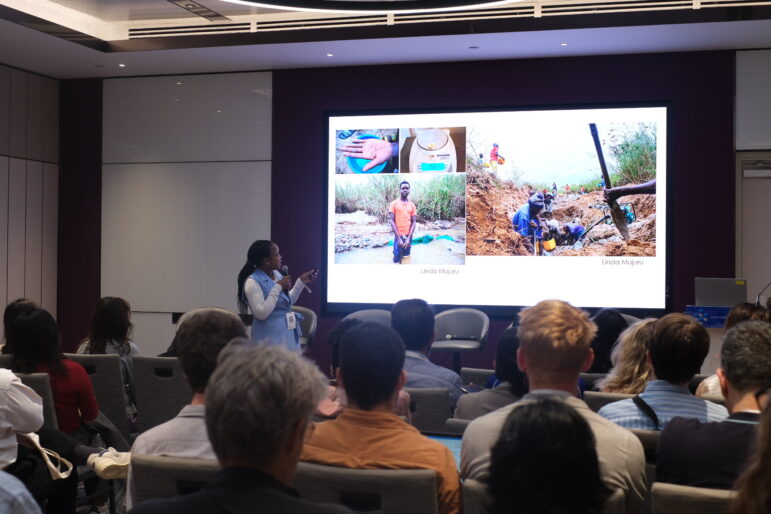
Zimnanwean freelance investigative journalist Linda Mujuru told attendees that it is critical to develop sources within local communities who live in and around mines. Image: Alyaa Alhadjri for GIJN
Trust Is Vital
When reporting on sensitive issues such as illegal mining, trust is vital, emphasized both Mujuru and Mendes. “Indigenous people are attacked all the time and they need to trust you,” said Mendes. “They need to see examples of your [previous work].”
Both journalists said they have previously shared reportage on issues involving Indigenous communities with sources on the ground to show their intent as reporters and the impact that this kind of investigative journalism can have.
Doğu Eroğlu, an Istanbul-based investigative reporter and the founder of Ortak, an Istanbul-based independent investigative newsroom, discussed an investigation into the İliç gold mine disaster in eastern Turkey’s Erzincan Province in February 2024. The collapse of cyanide-laced leach material — crushed, low-grade ore stacked in large heaps and irrigated with a chemical solution to dissolve and extract valuable metals like gold, copper — resulted in the deaths of nine mine workers.
“We had a list of former and current workers at the mines but they had signed a non-disclosure agreement [with the mining company],” said Eroğlu. “Everyone was terrified [to speak to us]. Even engineers who were working elsewhere and would possibly go back to the mines were terrified. We had to find retired miners who didn’t give a damn about the company.”
“Physical intimidation is big in Turkey,” added Eroğlu, speaking about investigative journalism in his country. Bigger firms have a reputation at stake and, as such, small companies can be “more dangerous, because they put all their eggs in one basket” as a business, he explained.
Takeaways and Tips
To tackle concerns of post-publication retaliation, trust is the best defense, said Mujuru: “It is important to identify organizations that you can collaborate with.” For smaller newsrooms or those without legal departments, Mendes suggested using a pro bono lawyer to conduct a legal review pre-publication.

